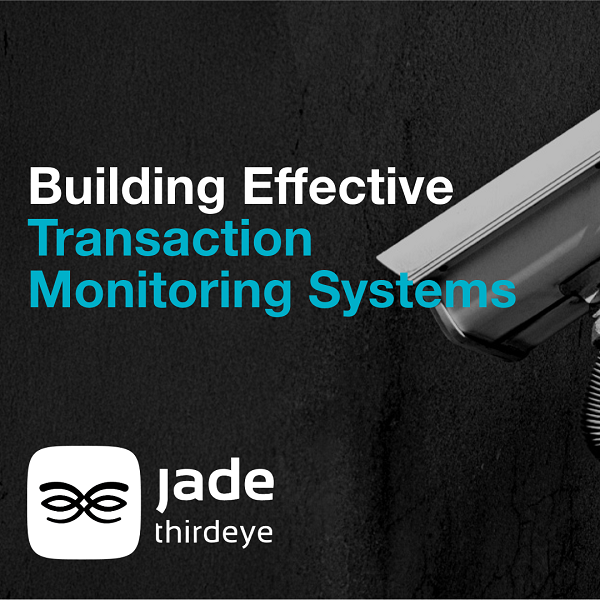
Beyond compliance – Building effective transaction monitoring systems
Recently, Jade ThirdEye hosted an exclusive roundtable for financial crime specialists in the banking sector at Rockpool Bar & Grill in Sydney. The event brought together diverse professionals from across the industry to engage in open discussion about transaction monitoring challenges and best practices.
The roundtable discussion focused on transaction monitoring in the banking sector, structured around three fundamental questions:
- The Value of Purpose in Compliance
- Navigating Evolving Regulatory Requirements
- Building Monitoring Systems That Learn and Adapt
Through this framework, attendees explored both the regulatory requirements and practical implementation challenges that financial institutions face in their AML compliance efforts.
The value of purpose in compliance
Financial crime compliance extends far beyond ticking regulatory boxes. Its true value lies in establishing an organisation-wide culture where everyone understands their role in prevention.
The balance between business growth and risk management begins with clear leadership direction. Your board carries ultimate responsibility, even without managing day-to-day operations. They need confidence that compliance objectives are met through transparent reporting across all three lines of defence – showing what the business is doing, how compliance verifies it, and how audit validates control effectiveness.
This clarity must cascade through your organisation. Transaction monitoring analysts perform more effective reviews when they understand why specific rules exist and which risks they address. Rather than following procedures blindly, staff who grasp the purpose behind compliance activities make more thoughtful decisions.
Comprehensive training reinforces this approach. Beyond teaching required actions, effective training explains why those actions matter. This creates a context that transforms compliance from an obligation into a shared organisational mission with a meaningful purpose.
When everyone from the boardroom to the front line understands “why,” compliance becomes more than a regulatory requirement—it becomes a competitive advantage and organisational strength.
Navigating Evolving Regulatory Requirements
Most organisations grasp the legal requirements of AML compliance, even when those rules require interpretation. As legislation and regulations evolve, maintaining awareness of proposed and finalised changes is essential for ongoing compliance. Beyond this baseline knowledge, organisations must determine whether meeting minimum requirements aligns with their risk appetite or if a more robust approach is warranted.
The regulatory scope is expanding to include proliferation financing. Even if you consider this an unlikely scenario for your business, you still need to assess this risk, even if you ultimately classify it as low.
For organisations with limited experience in this area, external expertise can be valuable, particularly if your customers include businesses producing materials with potential dual-use applications.
Building Monitoring Systems That Learn and Adapt
Developing effective transaction monitoring requires a methodical approach that balances regulatory requirements with practical implementation. Here’s how to build systems that detect suspicious activity while minimising false positives.
- Start with Risk Assessment – Transaction monitoring rules should be grounded in your risk assessment, serving as specific controls for identified risks. Your assessment must be tailored to your business’s nature, size, and complexity—understanding customer risk levels and applying proportionate controls.
- Collaborate on Design – When designing monitoring rules, facilitate discussions between your team, advisor, and the rule creators. The person writing the rules needs to clearly understand what they should be detecting and why. Your advisor can help bridge any knowledge gaps, ensuring all parties share a common understanding and direction.
- Test Before Implementation – Don’t expect perfect rules immediately. First, have an analyst who understands your business and data test each rule in a sandbox environment. Challenge them to design the best rule for your defined control. A rule might be theoretically sound, but your specific data quality or structure may require adjustments that only testing will reveal.
- Find the Right Balance – Allow your analyst to experiment with different thresholds to find the right balance. Effective monitoring strikes a balance between identifying suspicious activity and generating too many false positives – finding this equilibrium comes with experience.
- Refine Through Experience – Begin with universal rules and assess the outputs. Once you understand the results, consider whether segmentation based on customer profiles (risk level, business type, age, occupation) would improve effectiveness. Remember that historical data has limitations. Patterns of behaviour change over time, so don’t expect this year’s activity to mirror last year’s exactly. Plan to tune your rules as behaviours evolve, and you better understand their outputs.
- Learn From Each SMR – When you file a Suspicious Matter Report, consider it an opportunity for system improvement. Ask your analyst to look for similar patterns across your customer base and consider whether you should adjust existing rules or create new ones to detect this typology.
- Enable Your Frontline – Make your rules clear and ensure frontline staff understand what each rule detects and why it matters. Encourage feedback from line 1 if they believe rules aren’t performing as intended. Their practical observations can drive valuable improvements to your monitoring approach.
- Leverage Collective Knowledge – You don’t need to tackle these challenges alone. Connect with industry peers to discuss approaches both organisationally and personally. The collective knowledge gained through internal teams, external providers, and industry relationships strengthens our effectiveness in financial crime detection.
The Jade ThirdEye team are always there to support you – whether through best practices, guidance, or simply a conversation.
Learn more about their Financial Crime Monitoring system here, or contact them to schedule a meeting with one of their experts.


